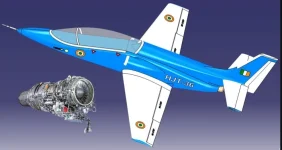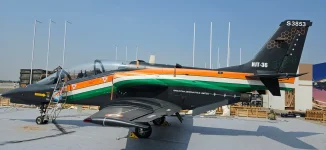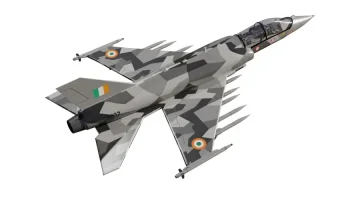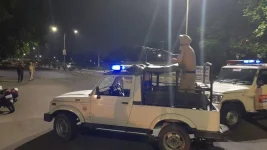- Views: 2K
- Replies: 21
India's indigenous Intermediate Jet Trainer (IJT) HJT-36, known as the Sitara, is finally on track to enter full-scale production by 2028, according to a Hindustan Aeronautics Limited (HAL) official.
This positive development comes after years of rigorous trials and design modifications aimed at meeting the stringent requirements set by the Indian Air Force (IAF).
The Sitara program faced significant challenges, particularly with the aircraft's spin characteristics. In 2017, IAF officials deemed the aircraft unfit for service due to concerns about its spin recovery capabilities.
However, HAL persevered, undertaking a comprehensive design overhaul in collaboration with UK aerospace giant BAE Systems.
The modifications focused on the aircraft's rear and tail sections to address the spin recovery problems. The revised design underwent extensive mathematical modelling and wind tunnel testing to validate its aerodynamic stability and ensure safe stall and spin recovery.
In addition to the structural changes, HAL upgraded the IJT-36's avionics suite to meet modern standards for pilot training.
This upgrade ensures the aircraft can effectively bridge the gap between basic and advanced jet training, preparing pilots for the complexities of modern combat aircraft.
The IAF has a requirement for 85 IJTs to replace its aging fleet of HJT-16 Kiran trainers, which are nearing the end of their service life.
The HJT-36 is designed to provide a more advanced training platform with capabilities that align with contemporary combat aircraft, preparing pilots for the demands of modern aerial warfare.
Currently, the IJT-36 is in limited series production, allowing for further refinement based on operational feedback before full-scale production commences.
This phased approach ensures that the final product meets the IAF's exacting standards and provides a reliable and effective training platform for its future pilots.
The Sitara program's progress is a testament to HAL's commitment to developing indigenous defence technologies and overcoming technical challenges.
The anticipated full-scale production by 2028 will be a significant milestone for India's self-reliance in defence manufacturing and will provide the IAF with a much-needed modern trainer aircraft.




